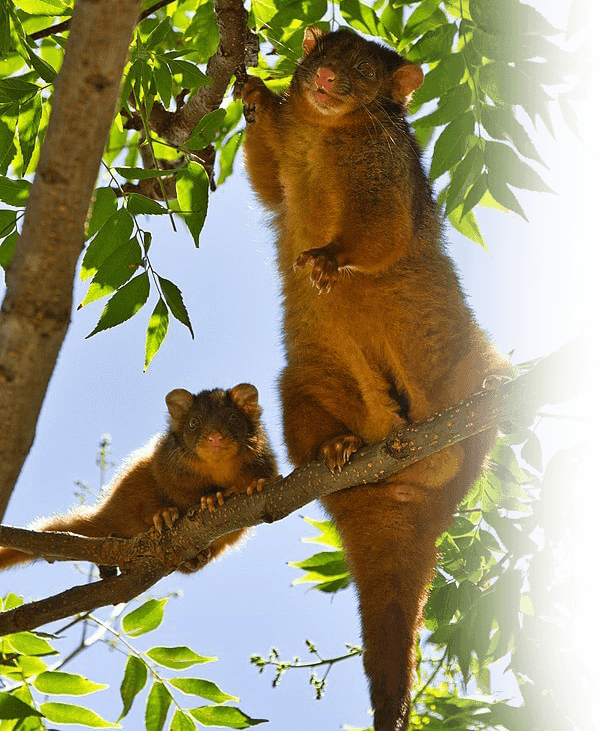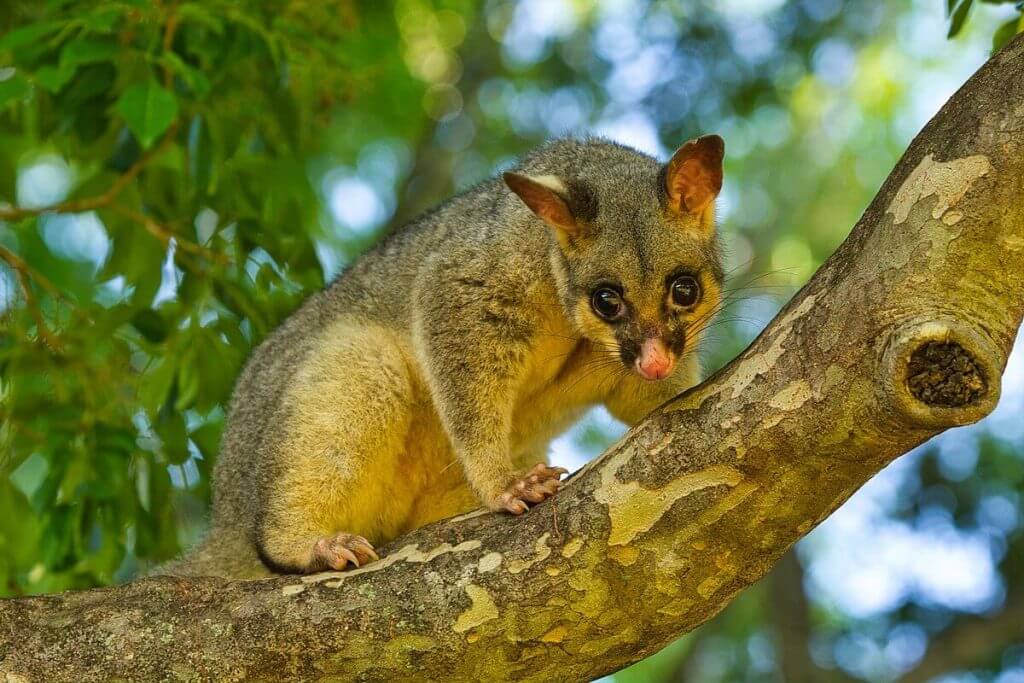Australia is home to several types of possums. There are approximately twenty-three known species that you can find in the region. The Australian possums are marsupials and belong to the Phalangeridae family. Possums are protected under the Wildlife Act 1975 due to their native origin.
Among the types of possums roaming the forests at night, there are two kinds well known to invade private properties in the cities and seek refuge on rooftops and attics.
The Common Brushtail Possum
The common brushtail possum or Trichosurus vulpecula is a nocturnal, semi-arboreal marsupial native to Australia. It's part of the Phalangeridae family and is the second-largest possum and the most widespread marsupial in Australia.
A possum's diet mainly consists of leaves, but it can also eat insects and small mammals such as rodents. Its favourite food is eucalyptus leaves.
Description:
The common brushtail possum has large and pointy ears. The tail is bushy with a naked and pointy end. This is because possums mainly use it to grasp branches and to climb trees. The forefeet have sharp and long claws. The thumbs on their hind feet are clawless and possums use them mainly for grasping.
Possums have thick and woolly fur and usually have one out of four colour variations: black, brown, silver-grey and golden-brown.
The head-and-body length is between 35-58cm with a tail length of 25-40cm. Their weight varies between 1-5kg. Females are generally smaller than males. The fur of the males is reddish-brown at their shoulders. As the brushtail possums are marsupials, the females have a developed pouch on their abdomen.
Behaviour:
The common brushtail possum has mostly single lifestyle. Possums use their scent and urine to mark their territory and keep their fellow species away. Brushtail possums are usually not aggressive towards each other. They warn each other by staring with erect ears and making hisses, alarm chatters and screeching.
Life Cycle:
The brushtail possum can breed at any time of the year, but reproduction peaks in spring and autumn. The mating process is entirely random - some males can mate with a couple of females, and some with none.
The females’ pregnancy period lasts between 15-18 days; after that, they give birth to a single newborn. The young one is only 1.5 cm long and weighs 2-3g. The infant will stay into the mother's pouch for another 4-5 months. When it's old enough, the little one is left in the mother's den and rides her back for another 2-3 months.
Females tend to have a higher survival rate than males because females establish their homes close to their mothers, unlike the males who travel far away.


